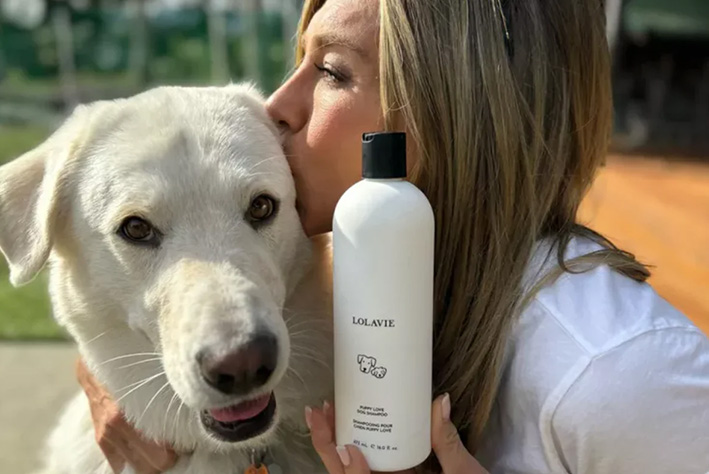A guide to blagging your way through ‘quality’ publishing

Opinion
Celebrity journalism has often blurred the line between PR and reality — but the Bernard Bale story reveals just how far you can go when no-one asks questions.
What does it actually mean to be a person? If someone says something on your behalf, does that count as your voice?
In journalism — especially the celebrity-industrial kind — the answer has always been: close enough. If a publicist types it, if an agent confirms it, if a quote sounds “on brand” — that’s good enough to be published, clicked and monetised.
For those who missed The Guardian’s quietly damning exposé last weekend, Bernard Bale is an obscure British freelance writer whose contacts book resembles a David Beckham birthday bash.
Bale has, over several decades, published supposed world exclusives with A-listers like Johnny Depp, George Clooney, Keira Knightley, Jennifer Aniston and even Barack Obama.
One small problem: some of their representatives say these interviews never happened. And yet the quotes appeared in reputable outlets — Hello!, The Independent, People — after first being printed in the lesser-known Somerset Life or Scotland’s now-defunct The Weekly News.
So how did Bale pull it off? In one revealing moment, he admits that quotes from Knightley came via “one of her agents”. In other words, he never actually spoke to her.
But that’s not unusual — in fact, that’s all too common in celebrity journalism. And there are worrying signs that it’s becoming prevalent in other areas of the trade too.
Phantom menaces
Bale isn’t a con artist. He’s a bullshit merchant.
This is not to imply wrongdoing but, to borrow from philosopher Harry Frankfurt’s famous definition: a bullshitter doesn’t care if what he says is true, as long as it works.
Bale’s interviews “worked” — they got published, they went viral and they were monetised by media companies and advertisers. That’s the system.
Too much of the industry already operates this way. If you’ve worked in media, PR or advertising, you’ll know: quotes are routinely negotiated by teams, then attributed as if they were spoken aloud.
Bale didn’t game the system. He understood it better than most.
The more uncomfortable truth is this: a lot of modern journalism doesn’t require a real person at all. It only needs the idea of a person — someone clickable, recognisable, brand-safe. The personhood of the celebrity is optional. What matters is the illusion of intimacy and the appearance of access.
This is how PR replaces journalism. This is how fame becomes content.
The long and the short of shit
Too many editors are complicit. In fact, they’re desperate.
Many regional magazines are owned by national publishing networks that syndicate celebrity content across dozens of titles. As local print readership collapses and programmatic advertising dominates, editorial standards become a luxury.
If a freelancer promises you a six-page interview with Clooney talking about Derby County Football Club, it’s not in your interest to ask too many questions. You check the word count, schedule the layout and thank your lucky stars.
This matters because trust in media is already fragile.
The Reuters Institute Digital News Report 2024 reveals that only 40% of people globally say they trust most news most of the time — a figure that has been declining over the past five years. Trust in news content — particularly entertainment and celebrity journalism — is even more precarious.
Despite what you’ve heard lately, readers have eyes and they are connected to brains. Just because celebrity-driven stories rack up high click numbers doesn’t mean audiences actually believe them.
Too-good-to-be-true content may be great for today’s web traffic, but may cause irreparable long-term damage — not just for publishers but also advertisers that want to reach audiences in quality content environments.
Blag mirror
It calls into question how valuable the premium is for having content produced by professionals.
And no wonder that adspend on user-generated content is set to overtake professionally produced content from next year, according to GroupM figures published in Warc’s latest quarterly Ad Spend Report (which I authored, I should declare).
If you can’t trust what professionals produce, then the whole enterprise is the literary form of WWE: a bunch of fake wrestlers prancing around doing fake fights with their fake tans and fake names.
The apotheosis of this is malignant clown Alex Jones, who will stop at nothing to “entertain” with the guise of producing “alternative facts”. He became a billionaire by selling the worst kind of bullshit: dangerous conspiracy theories.
At least Bale has the decency to produce heartwarming tales of Clooney’s unlikely adoration for Derby County (Derbyshire Life) or Aniston’s cynophilia (Dogs Monthly), which may or may not have had anything to do with hawking canine shampoo.
Just look at the excellent recent coverage by Press Gazette on the even stranger case of Barbara Santini, who became a widely quoted “psychologist” in UK national media — despite having no verifiable credentials.
The Guardian later revealed that Santini’s expertise was largely fabricated, her affiliations unclear and her presence amplified through press release platforms.
All you need nowadays is ChatGPT and a gullible news industry to bullshit your way into a national conversation. How many Santinis are lurking out there in the billions of “news” pages? Could it ever be known?
So what does Bale really represent? He’s not a villain; he’s a mirror. He’s what happens when the industry stops caring about whether someone actually said something and starts rewarding whoever gets it printed first.
He’s the man who asked: why bother chasing real interviews when everyone’s pretending anyway?
And too many in our industry, unfortunately, would agree.
Should the industry do more to clamp down on fabricated quotes, stories and sources? And, if so, what should it do? The best answers will feature in the next edition of this column.
Familiarity breeds contempt?
There was very little response to my previous column’s question about whether social media apps are basically indistinguishable now — as Meta and Mark Zuckerberg have argued in an ongoing US antitrust trial.
In an industry where four in every 10 advertising pounds spent in the UK goes on “online display” (much of it on social platforms, especially Facebook and Instagram), you’d think there would be more discussion about whether this part of the ecosystem needs more diversity — or if diversity is even preferable.
It reminds me of a previous column from 2023, when Google was the one under antitrust scrutiny (for the first time): “Google has become so influential and powerful in UK advertising that trying to get anyone to say anything about it on the record is almost impossible. That’s another thing about monopolies: they tend to stifle freedom of speech.”
 Omar Oakes was founding editor of The Media Leader and continues to write a column as a freelance journalist and communications consultant for advertising and media companies. He has reported on advertising and media for 10 years and was previously media and tech editor of Campaign. His column on The Media Leader was nominated for the BSME’s B2B Column of the Year in 2024.
Omar Oakes was founding editor of The Media Leader and continues to write a column as a freelance journalist and communications consultant for advertising and media companies. He has reported on advertising and media for 10 years and was previously media and tech editor of Campaign. His column on The Media Leader was nominated for the BSME’s B2B Column of the Year in 2024.




